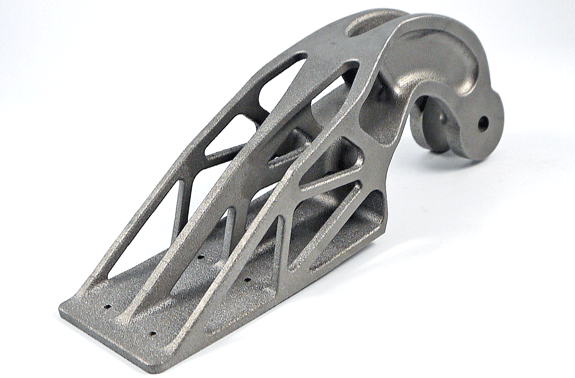EOS offers enhanced procedures for quality control in Additive Manufacturing
June 4, 2013
Additive manufacturing (AM), or 3D printing, is not only used for rapid production of prototypes but is increasingly being used for series manufacture of functional components. Quick time to market and a need for manufacturing flexibility are important, as is reproducible part quality.
Determining and specifying parameters when using laser sintering can be complex and time consuming. To simplify the process German AM system manufacturer EOS has introduced ExposureEditor and start values for its entire material portfolio, allowing parameter sets to be adjusted.
The system offers an editing function for optimising the parameter values in the exposure settings, which can then be run on EOSINT plastic or metal laser sintering machines. Factors taken into account include surface quality, mechanical attributes, accuracy, detail resolution and cost targets.
ExposureEditor enables a high level of flexibility and openness so that users can meet their specific requirements and implement customised optimisations. Only process critical parameters are protected, with EOS providing parameter values for the vertical, Z direction as well as in X and Y.
Customers are granted additional freedoms through EOS custom parameter sets, which allow for tailor made solutions, based on a user’s specifications. The customer’s intellectual property is protected through a licensing model that allows use and payments to be controlled.
Metal laser sintering
EOS parameter sets are available for direct metal laser sintering on EOSINT M 270 dual mode and EOSINT M 280 systems. Parts produced are dense and the mechanical and thermal properties are almost identical to those of the solid material.
Each metal is assigned one or more parameter sets with corresponding part property profiles (PPP) which typically include geometric properties such as minimum wall thickness and surface roughness; mechanical properties such as tensile strength, yield strength, elongation at break, modulus of elasticity, hardness and, where applicable, dynamic fatigue life; thermal attributes such as thermal conductivity, specific heat capacity and thermal expansion coefficient, and properties affecting cost such as build-up rates in mm³/s.
The three EOS parameter sets for metal laser sintering AM applications are:
- Speed: with 30-60 μm layer thickness for high productivity and good surface quality. It represents a good compromise between build speed and surface quality.
- Performance: with a 30-40 μm layer thickness, is suitable when the focus is on surface finish, yet offers higher productivity than parameter sets involving thinner layers, helping to reduce production costs
- Surface: A 20 μm layer is the lowest thickness and is ideal for parts that require fine and high detail resolution and best surface quality.
Advantages of the EOS categorisation system are evident throughout the entire process of bringing a new product to market, be it of metal or plastic, state EOS. The designer can access standardised property profiles at any time as well as the corresponding material values relevant for dimensioning. Purchasing and sales staff benefit from clearly defined quality levels, making quotes consistent and more efficient and eliminating expensive misunderstandings.
From the manufacturer’s point of view, PPPs increase efficiency and reduce costs for data preparation and production planning. Finally, the quality assurance department benefits from defined standards and improved transparency, which is important both in prototyping and series manufacture. Three software modules within EOSTATE 1.2 (Quality Assurance, Controlling, and Machine Park Management) provide various reports to meet customer requirements with regard to quality assurance and documentation.
















